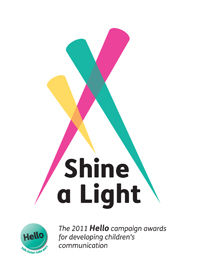Bangladesh: International award for combating disability prejudice
 Centre for Services and Information on Disability was selected for its work with some of the most marginalised children and young people in Bangladesh
Centre for Services and Information on Disability was selected for its work with some of the most marginalised children and young people in Bangladesh
The STARS Foundation has selected Dhaka-based Centre for Services and Information on Disability (CSID) as this year's recipient of the 2011 Asia-Pacific STARS Impact Awards, in the category of Education. The organisation will receive US$100,000 of unrestricted funding and tailored consultancy support.
Centre for Services and Information on Disability was selected for its work with some of the most marginalised children and young people in Bangladesh, offering them access to education and employment and promoting their inclusion into society. By advocating for equal rights for people with disabilities, CSID's work centres around their inclusion into mainstream society, whilst combating prejudice, which favours institutionalisation and marginalisation. CSID's two-fold approach to tackling prejudice involves working at the national level, to advocate for the rights of disabled people and at the community level, to motivate and sensitise parents, leaders, teachers on the need of inclusion, not institutionalisation.
"Centre for Services and Information on Disability is a very community-based organisation, providing a much needed service to children and adults with disabilities, working tirelessly to ensure they have access to same basic rights as people without disabilities," said Cecile Hyafil, Programme Officer, Asia-Pacific, STARS Foundation.
Tackling the issue of disability in Bangladesh is particularly challenging, as it is still largely neglected by the national Government, which only allocates less than one per cent of the annual budget to the issue of 10% population with disabilities. It is also very difficult to convince communities that people with disabilities have basic human rights.
Instead of sending their disabled children to school, some parents demand that they beg on the streets to earn an income for the family. Sometimes the children are completely neglected by their parents and left at home in a dark room all day. In other cases, parents are usually ashamed of their children and don't want them to go out and be seen by other members of the communities.
The organisation has adopted a community-based approach to the inclusion of children with disabilities by including the involvement of former beneficiaries as peer educators, and by bringing together children with and without disabilities together through activities such as theatre.
CSID was established in December 1997 by the current Executive Director, Khandaker Jahurul Alam. Alam had polio when he was a child and now is physically disabled. Although organisations working on disability in Bangladesh existed before CSID was established, none were offering holistic services to the disabled, as most focused on a particular field of institutional based intervention such as health or physical rehabilitation and isolated special education. CSID's all encompassing approach to tackling the issue at all levels enables the organisation to provide a much-needed comprehensive service.
"We are delighted to have received the STARS Foundation Impact Award. With the additional funding, we will be able to establish a permanent setup for organisational sustainability and improve access to formal education and further develop partnerships between families/community and schools as well," said Khandaker Jahurul Alam, Executive Director, Centre for Services and Information on Disability.
Visit http://www.starsfoundation.org.uk/en/impact-awards/
For further information email: This email address is being protected from spambots. You need JavaScript enabled to view it.


 Winners of the Shine a Light 2011 Hello campaign awards – a national awards scheme focused on children and young people's communication.
Winners of the Shine a Light 2011 Hello campaign awards – a national awards scheme focused on children and young people's communication.  'Wi-Fi should be considered as an impediment rather than an aid to learning and may be particularly hazardous for pregnant teachers.'
'Wi-Fi should be considered as an impediment rather than an aid to learning and may be particularly hazardous for pregnant teachers.'